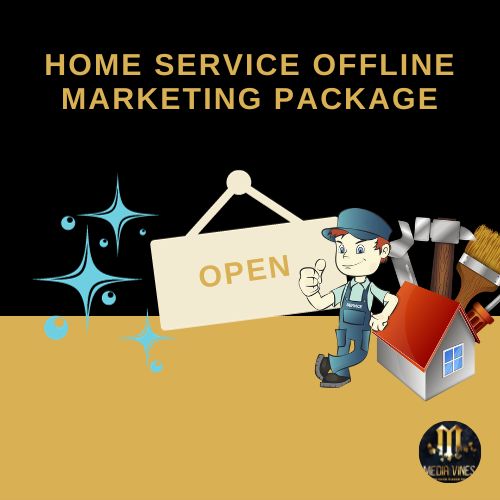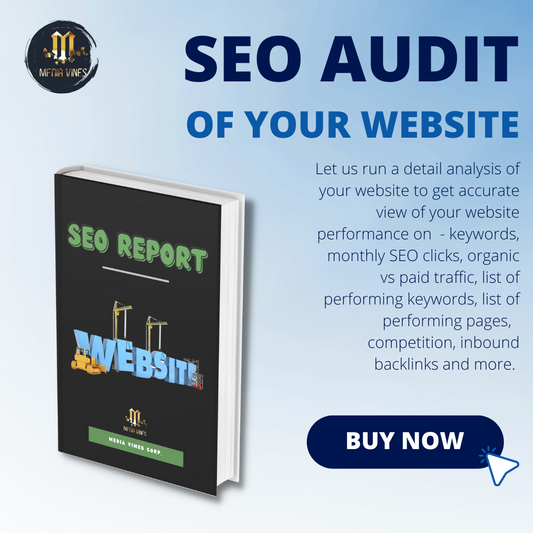Introduction
Content SEO is a strategy that helps you create the best possible content for your target audience. It's not just about keyword stuffing and writing as many pages as you can - it's about creating something that will engage your customers and help them find what they need.
The aim of content SEO is to bring the best information to users - but you'll need to write creatively, often, and consistently.
Keyword research
Keyword research is the foundation of content SEO. It's the process of finding keywords that are relevant to your content.
Keyword research is the process of finding and analyzing words and phrases that people use to search for information on the internet. The goal of keyword research is to identify the terms that people are using to search for the products or services that you offer, so that you can optimize your website and content to rank highly in search engine results pages (SERPs) for those keywords. This can help you attract more qualified traffic to your website, and ultimately drive more sales or leads for your business. Keyword research can involve a variety of techniques, including analyzing search data from tools like Google AdWords, conducting surveys and focus groups, and analyzing the language and terminology used by your target audience.
Keyword research is an important part of content SEO because it helps you determine what people are searching for, how many people are searching for it, and where they're searching. Keywords help you find topics that interest readers, which can lead to better search rankings and more traffic.
What is long-tail keyword?
A long tail keyword is a more specific and detailed keyword phrase that is typically made up of three or more words. It is called a "long tail" keyword because it is longer and more specific than a more general, shorter keyword. Long tail keywords are often used in search queries when people are looking for very specific information or products. They tend to have less search volume than more general, shorter keywords, but they can be an important source of traffic for your website because they are often more relevant and specific to your business or products. For example, "red Nike running shoes size 8" is a long tail keyword, while "running shoes" is a shorter, more general keyword. By targeting long tail keywords in your content and SEO efforts, you can attract more qualified and specific traffic to your website.
Long-tail keywords are the best type of keywords to target. The longer the keyword, the more specific and targeted it is. For example, if you search for “dog food” on Google, there are thousands of results that include this keyword. However, if you search for “organic dog food for large breeds in Canada” then only a few websites will rank in your search results since this is more specific and targeted than just using the word “dog food” alone.
Another benefit to targeting long-tail keywords is that they typically have higher click through rates (CTR) compared to shorter keywords like “dog food” or even medium length ones like “organic dog food” because they are much more targeted towards users looking for something specific rather than just browsing aimlessly online trying to find something relevant without knowing exactly what they want yet!
Keyword Search Intent
Keyword search intent is the reason why someone is conducting a Google search. Search intent refers to the purpose or goal behind a user's search query. When someone types a query into a search engine, they have a particular goal or intention in mind. Understanding the search intent behind a query can help businesses and content creators better understand what a user is looking for and how they can provide the most relevant and helpful information.
There are four main types of search intent:
-
Informational: When a user is looking for information on a particular topic. For example, "What is the capital of France?"
-
Navigational: When a user is looking for a specific website or web page. For example, "Facebook login"
-
Transactional: When a user is looking to make a purchase or take some other action. For example, "buy Nike shoes online"
-
Commercial investigation: When a user is considering making a purchase but is still in the research phase. For example, "compare prices for laptops"
Understanding the search intent behind a query can help businesses and content creators better understand what a user is looking for and how they can provide the most relevant and helpful information. It can also help businesses optimize their websites and content to rank higher in search results for specific types of queries.
Long-tail keywords and SEO strategy
Long-tail keywords are more relevant, specific and (obviously) longer than the more general keywords that most businesses tend to focus on. For example, if you’re selling baby car seats and someone searches for “car seat”, they may not be ready to buy right away; they might just want to learn more about car seats before they make a purchase. On the other hand, someone searching for “narrow baby car seat” will likely be closer to taking action because they already know what they want and need.
Long-tail keywords like these are also easier to rank for than broad head terms like “baby car seat” because there are less competitive websites vying for them. You can use these long tail keyword ideas as inspiration when coming up with content ideas that target people who have specific needs or problems (such as buying a narrow baby seat).
Search intent
Search intent is a user's reason for searching. It's the "why" behind their search.
For example, someone might search "build a house" because they are looking for instructions on how to build their own house and want to get started right away. Someone else might be searching "build a house" because they're trying to figure out how much it would cost them in materials, labor, etc., before deciding whether or not it makes sense for them financially. A third person could be doing research on building codes and regulations before ordering supplies from Amazon and getting started on construction—and so forth!
The content you create needs to match up with whatever it is your audience wants from that search term/keyword combination if you want readers who come via organic searches (i.e., people who type these keywords into Google) find value when visiting your website—and ultimately convert into customers or subscribers!
Why is SEO content still important in 2023?
Search engines are still the most widely used way to find information on the web. In fact, they account for more than half of all traffic to websites and have been doing so since as early as 1998 (that's right, the first Google results page had only ten sites!)
So why is SEO content important? Because it’s the only way you can get your website to rank at the top of search results. And while you could go through other routes—like paying for ads or buying links—those options are expensive and risky.
Keyword research tools
Once you've done your research and found a keyword that you want to optimize for, it's time to use some tools. You may be familiar with Google Keyword Planner. It can be helpful for finding keywords that aren't being searched as often, but it doesn't give you as much insight into whether or not those terms are relevant to your business.
Google has an alternative tool called Keyword Planner, which requires you to set up an account on the site before using it (and get approved by Google). However, there are other tools available on the web that provide similar functionality without requiring a login or approval from Google. Here are some good ones:
-
Keywordio - This tool provides detailed information about search volume and difficulty among other things when considering whether or not a certain keyword is worth pursuing in content strategy efforts.
-
Ubersuggest - This extension for Firefox helps generate long-tail search queries based on what people have searched before looking specifically at what type of content they might be interested in reading next based off previous searches they made while surfing online!
What does a good SEO strategy look like?
Keyword research
The first step to creating an effective content SEO strategy is to conduct keyword research. This includes the following steps:
-
Discovering keywords that are relevant to your business and its offerings
-
Analyzing users' search behavior in Google, Bing and other search engines
Search intent: What type of content are users looking for when they use a searched term?
Keyword strategy: Are you optimizing your content for short or long tail keywords?
Website structure: How will you organize the different pages on your site to ensure that they're accessible through search engines and easy to navigate?
How should you structure your website for SEO?
To get the most out of your content, you’ll want to make sure it’s well structured. You can do this by using headings and subheadings, as well as using bullet points, lists and tables. You should also consider using images that illustrate what you are trying to convey in your content.
Also remember that good keywords are an important part of any good search engine optimization strategy. Make sure you use them throughout your site in the appropriate places so that Google knows what kind of content is on your website and how relevant it is for the search query being typed into its search bar.
You also need to make sure that links are linking from one page on your website to another page on your website (internal links) or outside websites (external links). This helps Google understand which pages on your site have similar topics so they can group those pages together when creating their search results pages (SERPs).
Copywriting for content SEO
Good quality content should be:
-
original. You can't expect to rank for a keyword if you're just rewriting other people's content.
-
well-researched. You need to prove that your content meets the needs of your audience and is relevant to them.
-
well-written. This means using proper grammar and spelling, writing in an engaging style, using correct punctuation, and not making any mistakes that would make it difficult for readers to understand what you're saying (even if they don't speak English as a first language).
-
well-structured. Your article should have an introduction explaining what it's about, followed by supporting paragraphs that go into more detail on each point while also adding new information at the end of each one so people aren't left with unanswered questions after reading it through once; then there should be some kind of conclusion or summary so readers know exactly what they've learned from reading this piece of writing before they move onto something else entirely different! If possible try keep things short but sweet! Can't stress this enough - readability matters here too! Also avoid jargon unless absolutely necessary."
Other factors that contribute to your position in SERP results (algorithm)
When you're looking at the search results for your keyword, you may also see what we call "snippets" of other websites in the SERP. These snippets are snippets of text taken directly from their webpages and presented in a box on your screen.
Google uses over 200 factors to determine which content will appear in its search engine result pages (SERPs). As you might expect, some of these factors include:
-
How many times have people clicked on this piece of content? The more people click on it, the higher it will rank.
-
Does my page contain new information or is it just rehashing old news? Google likes fresh content that adds value to their users' lives. If someone does a search about something like "best dog breeds" and then clicks through to read an article about that topic but it doesn't give them any new information or insight into breeds they didn't already know about before reading that article...then Google thinks that publisher is not adding any value for its readers anymore! That will hurt their chances at appearing higher up in Google's SERPs (Search Engine Results Pages).
-
Do I really need this? If there are two similar pieces of content written by different publishers...one saying something along lines such as "this breed makes great companions!" while another says "this breed is only good if you want one as an exotic pet"...you can probably guess which one would rank higher after doing some research into what people really want out there today..
The aim of content SEO is to bring the best information to users - but you'll need to write creatively, often, and consistently.
To be successful as a content marketer, you need to write creatively, often, and consistently.
The goal of Content SEO is bringing the best information to users. You want your blog posts, videos and infographics to be found in search results. And you want that stuff in front of people when they're looking for it.
To do this effectively: keep an eye on your competition; understand the difference between long-tail keywords and search intent; build links back to your site (yes, link building still matters); know how search engines interpret different types of content; create compelling titles and calls-to-action; write unique titles for each piece of content (so Google can tell them apart); use keywords strategically across all channels so they're consistent with other pages on your site; optimize images properly (not just alt tags!)
Closing
We hope this article has helped you to understand what content SEO is, how it works and why it’s so important. If you want to get started with your own strategy or just want more information about how we can help your business grow through our SEO services, get in touch today!
About Media Vines:
Based in Maui, Media Vines is an Asian American Woman-Owned technology company focusing on customed Website design & development, content SEO, digital marketing, content creation, mobile app design, e-commerce, social media management, and website maintenance.





